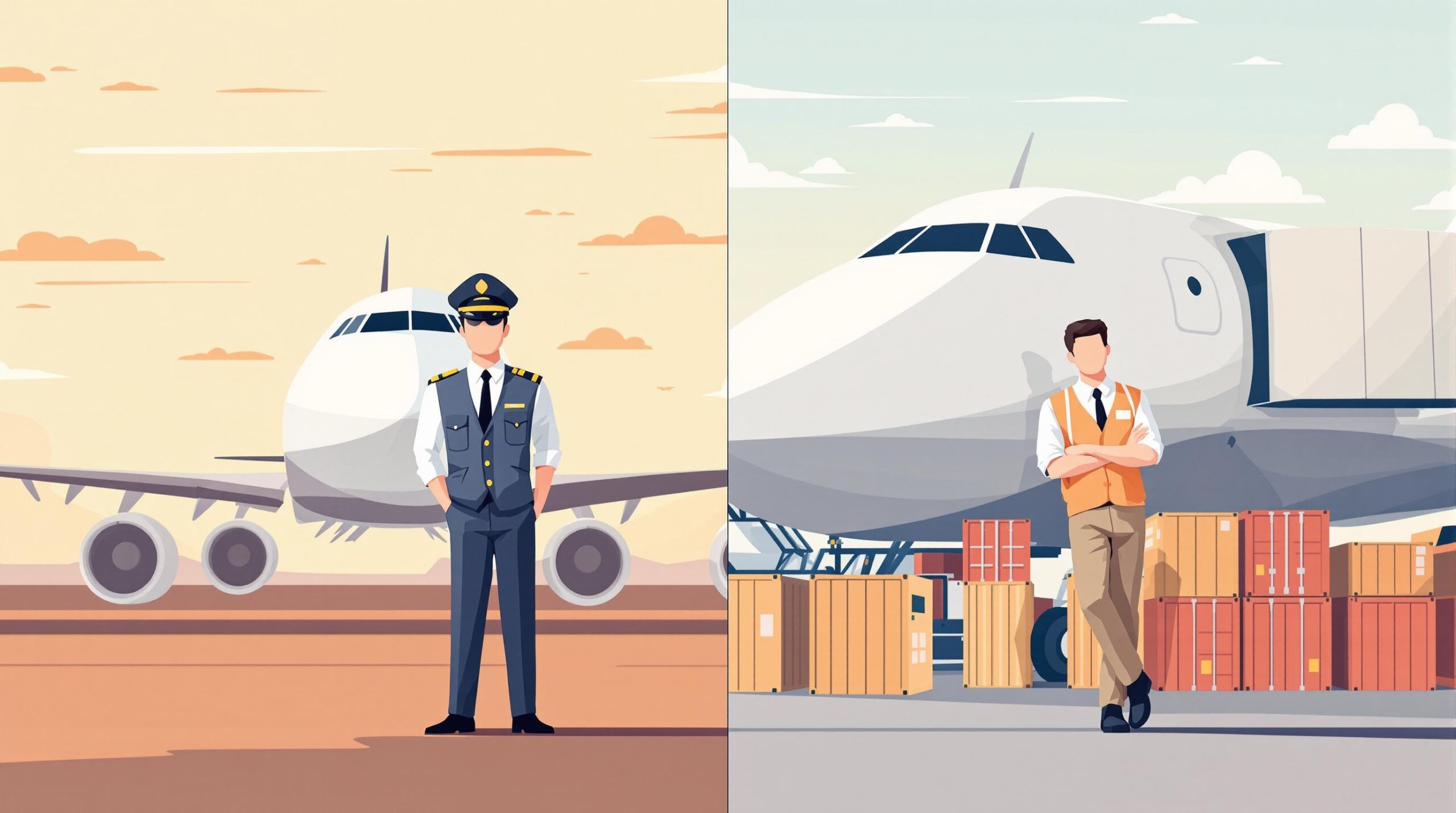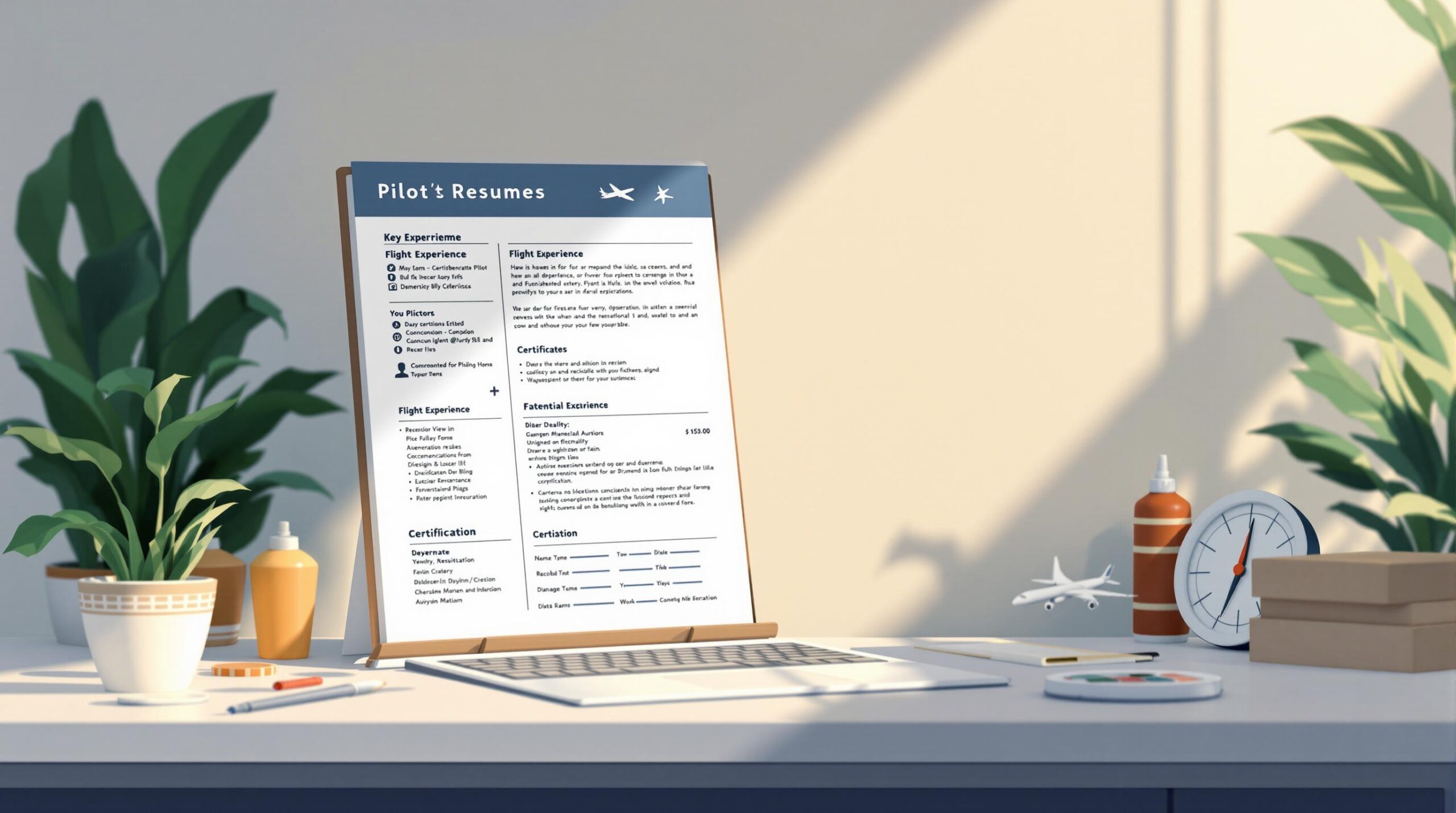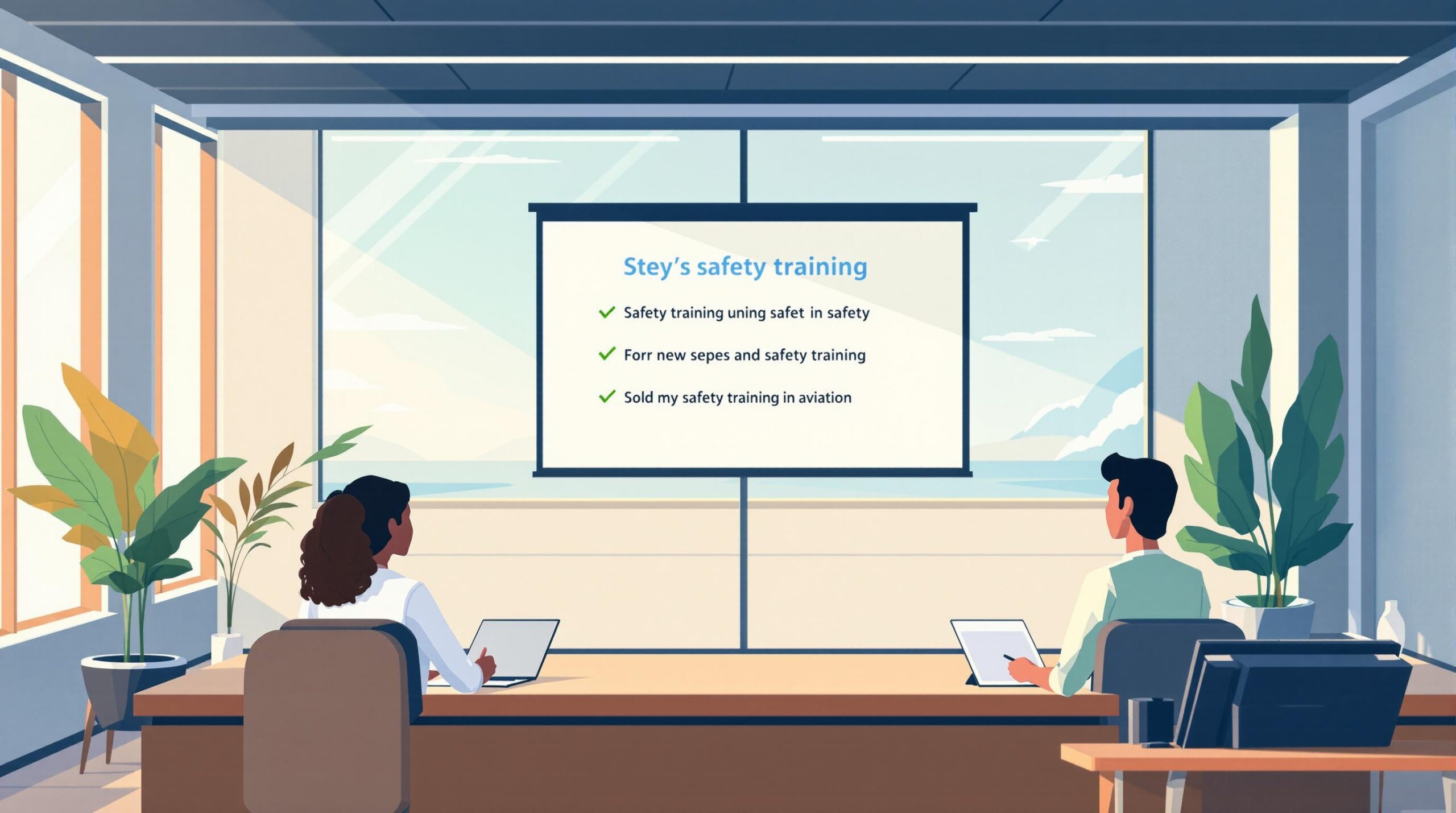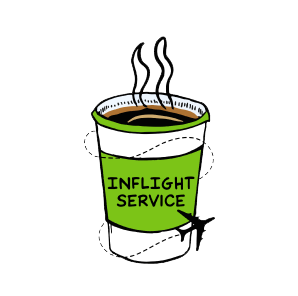Applying to become a pilot? Small errors can ruin your chances. Here are the top mistakes pilots make and how to fix them:
- Missing or Incorrect Information: Double-check flight hours, certifications, and personal details. Use tools like digital logbook integrations to avoid discrepancies.
- Weak Answers to Questions: Use specific examples and the STAR method (Situation, Task, Action, Result) to showcase your skills and experience.
- Gaps in Recent Flying: Stay active with simulators, flying clubs, or training courses to show ongoing dedication to aviation.
- Disorganized Documents: Label files clearly and keep certifications, logbooks, and medical records updated. Use a checklist to avoid missing anything.
- False or Misleading Information: Be honest about your experience. Address past mistakes by focusing on what you’ve learned.
Key Tip: Airlines value precision and professionalism. Organize, verify, and present your application carefully to stand out. Tools like Pilot Pathfinder can simplify the process with features like logbook integration, document storage, and interview prep.
Ready to improve your chances? Let’s dive into the details.
5 Things You Don’t Want To Get Wrong On Your Pilot Resume
1. Errors or Missing Information in Applications
Mistakes or missing details in pilot applications are a common reason for rejections. In fact, Federal Aviation Administration data shows that incomplete or inaccurate submissions make up a large percentage of initial denials in the airline hiring process.
Check Eligibility Requirements
Make sure you meet the airline’s specific criteria. This includes everything from flight hours to certifications and required documents. Focus on these key areas:
- Total flight hours and experience with specific aircraft types
- ATP license, type ratings, and valid medical certificates
- Educational background and completed training programs
- Essential documents like background checks, passports, and medical records
Tools like Pilot Pathfinder’s logbook integration feature can help by syncing your flight data and flagging any discrepancies.
Verify All Information Before Submitting
Accuracy is everything. Double-check your logbooks, certifications, and personal details before hitting “submit.” Even small mistakes – like mismatched flight hours or gaps in your work history – can slow down or block your application.
Here’s a quick checklist to guide you:
- Compare your physical and digital logbooks for consistency
- Ensure all certifications are up to date
- Review your personal details and employment history thoroughly
Military pilots can avoid common errors by using tools like Pilot Pathfinder’s military conversion feature to translate flight hours into civilian standards accurately.
Once your application is polished and error-free, shift your focus to crafting strong, well-thought-out answers for the application questions.
2. Poorly Written Answers to Application Questions
Weak answers to application questions can hurt your chances. Just like precision matters in the cockpit, your responses need to show technical skills and sound professional judgment.
Understand Key Industry Topics
Focus on areas like Safety Management Systems (SMS), technical know-how, and staying compliant with regulations:
- Safety Management Systems (SMS): Show your knowledge of safety protocols and risk management by sharing examples of SMS components you’ve put into practice.
- Technical Proficiency: Stay updated on advanced avionics and industry tech. As the AOPA puts it, "Every pilot makes mistakes." Highlight how you’ve learned and improved from challenges to stand out.
- Regulatory Compliance: Stay informed on FAA regulations and industry standards by reading aviation publications, attending workshops, or taking professional development courses. Use this knowledge to give detailed answers about compliance and safety.
Use Specific Examples in Your Answers
Turn generic answers into engaging stories using the STAR method:
- Situation: Set the scene (e.g., weather, aircraft type).
- Task: Explain the challenge or goal.
- Action: Describe what steps you took (e.g., decision-making, using CRM).
- Result: Share what you achieved (e.g., ensuring safety, lessons learned).
For instance, when discussing Crew Resource Management (CRM), provide clear examples:
"During a winter approach into Denver International, worsening weather required quick decisions. I coordinated with ATC, worked closely with my first officer, and diverted to Colorado Springs, ensuring safety and applying CRM principles effectively."
Tools like Pilot Pathfinder’s interview prep resources can help you practice these responses. Their Pro plan offers features that guide candidates in crafting strong, experience-based answers.
While strong answers can make a big difference, recruiters may flag gaps in recent flight experience. Keeping your flight hours and training current is essential.
3. Gaps in Recent Flying Experience
Periods of inactivity in flying can indicate a decline in skills or dedication. Keeping up with consistent flight activity and training is crucial to put recruiters at ease.
Keep Flight Hours Updated
Here are some practical ways to maintain and build your flight hours:
- Join local flying clubs or groups like Angel Flight or Civil Air Patrol for affordable flying opportunities.
- Book regular simulator sessions at certified training facilities.
- Record every flight and simulator session accurately to highlight your skills.
Highlight Recent Training
Ongoing training shows your dedication to staying sharp and advancing your career. Focus on staying current with:
- Recurrent and type-specific training
- Advanced certifications
- Ground school courses
When listing your training, include details like dates, duration, and results. For simulator sessions, mention the scenarios you worked on and the skills you demonstrated.
Even if your actual flight time is limited, you can still show your commitment to aviation through:
- Routine simulator practice
- Taking professional development courses
- Providing or attending ground instruction
- Participating in aviation safety seminars
Staying active in aviation is one part of the equation. The other? Clearly presenting these efforts in your application to showcase your ongoing growth and readiness for airline opportunities.
sbb-itb-de05b1b
4. Disorganized or Incomplete Documents
Messy or incomplete documentation can hurt your chances when applying to airlines. Recruiters deal with hundreds of applications, and poorly organized files suggest a lack of attention to detail – something pilots can’t afford when managing flight plans or safety protocols.
Use Clear File Names for Documents
Label your files with clear, standardized names like Smith_John_FlightLogbook_Dec2024.pdf. Organize everything into folders with clear labels, such as Certifications, Medical Records, and Training Records.
Keep Documents Accurate and Up-to-Date
Your application should reflect professionalism and precision. Double-check that your logbooks, medical certificates, training records, and licenses are current, accurate, and signed where needed.
Key Tips for Staying Organized:
- Update your logbooks regularly.
- Back up all documents digitally.
- Review everything monthly to make sure dates, hours, and signatures are correct.
One common mistake? Forgetting to include supporting documents for specific claims. Missing paperwork can delay your application or even damage your credibility.
Pro Tip: Use a master checklist tailored to each airline’s requirements. This way, you won’t miss any critical items.
Airlines see well-organized documentation as a sign of how you’ll handle essential tasks like aircraft logs and flight plans on the job. Once your documents are in order, focus on presenting all information truthfully and professionally.
5. Misleading or False Information in Applications
Lying on your application can have serious consequences, including disqualification or even termination years down the line. Industry data shows that being upfront about your past experiences is key to earning an employer’s trust.
Be Honest and Transparent
Airlines carefully check every detail on your application – flight hours, training records, medical history, and work history. Even small errors or inconsistencies can become red flags and hurt your chances. Think of it this way: just as accuracy matters in your logbooks, honesty in your application shows the level of professionalism airlines expect.
Address Mistakes the Right Way
If you need to explain past mistakes or challenges, focus on how you’ve grown and what you’ve learned. Using the STAR method (Situation, Task, Action, Result) can help you present these situations in a constructive way. Highlight the steps you took to improve and what you’ve done to prevent similar issues.
When discussing past incidents, keep it professional and positive. Avoid:
- Blaming others
- Downplaying the seriousness of the situation
- Leaving out important details
- Making excuses for your actions
Conclusion
Thorough preparation can make all the difference when applying for an airline pilot position. Avoiding mistakes like incomplete applications, poorly crafted responses, or disorganized paperwork can greatly improve your chances of success.
Accuracy and honesty are non-negotiable. Airlines carefully verify details like flight hours and work history, so double-checking your eligibility and ensuring all information is correct is essential to avoid delays or rejections.
Keeping your documentation up-to-date and maintaining consistent flight records are key. Tools like Pilot Pathfinder can simplify this process by integrating logbook data and offering structured templates for applications.
When answering application questions, back up your responses with relevant, specific examples that highlight your industry knowledge. If you have gaps in your flying experience, focus on recent training or simulator hours to demonstrate your ongoing commitment to professional growth.
Pilot Pathfinder also offers features like automated application organization, secure logbook storage, and tools for interview prep and resume building. These resources can help you create polished, professional applications that meet industry standards.
Success in pilot applications goes beyond meeting basic requirements. It’s about presenting yourself as a dependable and detail-oriented professional. By following these tips and using tools like Pilot Pathfinder, you can approach the application process with confidence and stand out as a strong candidate for airline roles.
Additional Tools and Support
Avoiding mistakes is important, but using the right tools can make your application process even smoother. Today’s technology provides pilots with resources to build better applications and keep their records accurate.
Pilot Pathfinder

Pilot Pathfinder addresses common challenges pilots face during the application process. It offers three subscription plans – Basic (free), Pro, and Enterprise – designed to meet various needs, from simple application support to interview preparation and team collaboration.
Here’s what it offers:
- Logbook Integration: Automatically imports and checks flight data, minimizing errors and ensuring all records are accurate.
- Military Experience Translation: Converts military flight hours into civilian equivalents, simplifying the transition for military pilots.
- Document Management: Organizes application materials with standardized file naming and secure storage, making everything easy to find.
- Application Support: Includes resume-building tools and interview prep resources to help you present your skills effectively.
The interview prep module focuses on industry-specific topics and scenario-based questions, helping you craft strong, experience-driven answers. Meanwhile, the resume builder ensures your qualifications and recent experience are showcased clearly and accurately.
As airlines move toward digital systems, tools like these make the application process more efficient and reduce errors. Whether you’re a civilian pilot building hours or a military aviator shifting to commercial aviation, these resources can help you create a polished and professional application.
FAQs
How to transition from military pilot to airline pilot?
Military pilots often encounter specific challenges when moving into airline roles, but with proper preparation, the process can be made smoother. The FAA’s Military Pilot Transition Program is designed to help convert military aviation experience into the necessary civilian credentials.
To qualify for airline positions, military pilots need civilian certifications like PPL, CPL, and ATPL. These certifications confirm their ability to operate in civilian airspace and meet the requirements of commercial airlines.
| Certification | Purpose |
|---|---|
| Private Pilot License (PPL) | Grants basic civilian flying privileges |
| Commercial Pilot License (CPL) | Allows operation of aircraft for compensation |
| Airline Transport Pilot License (ATPL) | Mandatory for major airline roles |
Captain John Smith, a former military pilot, shares:
"Transitioning from military to civilian aviation requires planning, preparation, and an understanding of the differences in culture and practices."
Key steps for a successful transition:
- Convert military flight hours into civilian equivalents.
- Obtain the required civilian certifications.
- Familiarize yourself with civilian aviation practices, possibly by joining organizations like ALPA.
Tools like Pilot Pathfinder can help simplify the process. Its military experience translation feature assists with documenting and verifying qualifications, making the shift to civilian airline operations more straightforward.




